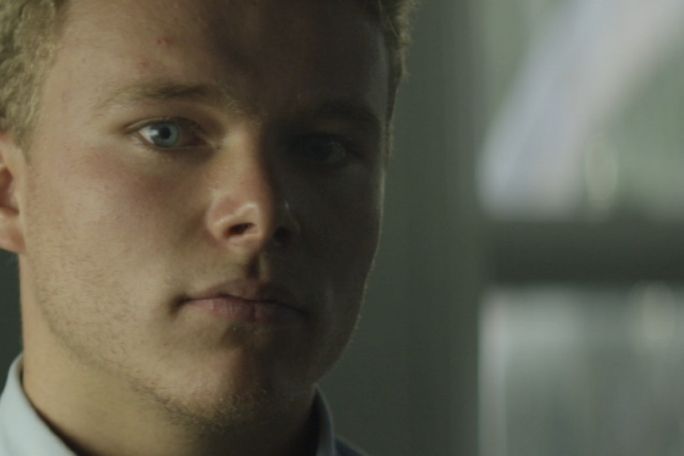Lesson summary
This lesson is part of the Aspire Generation English Unit. Students will work collaboratively to decide upon a local community issue or challenge that they would like to address. They will consider insights and information they have collected during previous lessons in this unit then work in groups to extend their work and develop a deeper joint understanding about their chosen issue or challenge. Students will then be guided to brainstorm ideas in their groups for how they can address the issue or challenge, then choose the action, volunteering role or community service they will carry out, and develop a plan to deliver it.
Learning intentions:
Students will...
- understand the value of planning and collaborating on projects that require cohesive, creative and critical thinking to achieve success
- develop their organisational, critical and creative thinking skills and apply these to project designs.
Lesson guides and printables
Lesson details
Curriculum mapping
Australian curriculum content descriptions:
Year 9 English:
Dependent upon unique project planning and drafting, but include:
- Create imaginative, informative and persuasive texts that present a point of view and advance or illustrate arguments, including texts that integrate visual, print and/or audio features (ACELY1746)
- Use interaction skills to present and discuss an idea and to influence and engage an audience by selecting persuasive language, varying voice tone, pitch, and pace, and using elements such as music and sound effects (ACELY1811)
Year 10 English:
Dependent upon unique project planning and drafting, but includes:
- Create sustained texts, including texts that combine specific digital or media content, for imaginative, informative, or persuasive purposes that reflect upon challenging and complex issues (ACELY1756)
- Use organisation patterns, voice and language conventions to present a point of view on a subject, speaking clearly, coherently and with effect, using logic, imagery and rhetorical devices to engage audiences (ACELY1813)
General capabilities: Literacy, Personal and Social Capability, Critical and Creative Thinking, ICT Capability
Cross-curriculum priorities: There are opportunities for students to engage with any of the cross-curriculum priorities across the scope of this unit. Direct or specific engagement with any of these can be made based on the unique attributes of the local community. Sustainability, Asia and Australia’s Engagement with Asia, Aboriginal and Torres Strait Islander Histories and Cultures
Relevant parts of Australian Curriculum English Achievement Standards:
Year 9: Students understand how to use a variety of language features to create different levels of meaning. They understand how interpretations can vary by comparing their responses to texts to the responses of others. In creating texts, students demonstrate how manipulating language features and images can create innovative texts. They make presentations and contribute actively to class and group discussions, comparing and evaluating responses to ideas and issues. They edit for effect, selecting vocabulary and grammar that contribute to the precision and persuasiveness of texts and using accurate spelling and punctuation.
Year 10: Students show how the selection of language features can achieve precision and stylistic effect. They explain different viewpoints, attitudes and perspectives through the development of cohesive and logical arguments. They develop their own style by experimenting with language features, stylistic devices, text structures and images. Students create a wide range of texts to articulate complex ideas. They make presentations and contribute actively to class and group discussions, building on others’ ideas, solving problems, justifying opinions and developing and expanding arguments. They demonstrate understanding of grammar, vary vocabulary choices for impact, and accurately use spelling and punctuation when creating and editing texts.
Unit of work: La Trobe University – Aspire Generation – English
Time required: 150 mins.
Level of teacher scaffolding: Medium – facilitate class discussion.
Resources required
- Student Worksheets – one copy per student OR computers/tablets to access the online worksheet
- Device capable of presenting a video to the class
- “How Might We…?” questions Factsheet, Conducting Secondary Research Factsheet, Brainstorm Rules Display, Project Planning Tool.
Skills
This lesson is designed to build students’ competencies in the following skills:
- Communication
- Community engagement
- Creativity
- Empathy
- Ethical understanding
- Initiative
- Social skills
- Leadership
- Problem solving
Additional info
This lesson supports La Trobe University’s Aspire Generation initiative, which empowers students to drive change through community engagement, volunteerism and leadership opportunities.


Welcome back!
Don't have an account yet?
Log in with:
By signing up to Cool.org you consent and agree to Cool's privacy policy to
store, manage and process your personal information. To read more, please see
our privacy policy here(Opens in new tab).
Create your free Cool.org account.
Many of our resources are free, with an option to upgrade to Cool+ for premium content.
Already have an account?
Sign up with:
By signing up to Cool.org you consent and agree to Cool's privacy policy to
store, manage and process your personal information. To read more, please see
our privacy policy here(Opens in new tab).